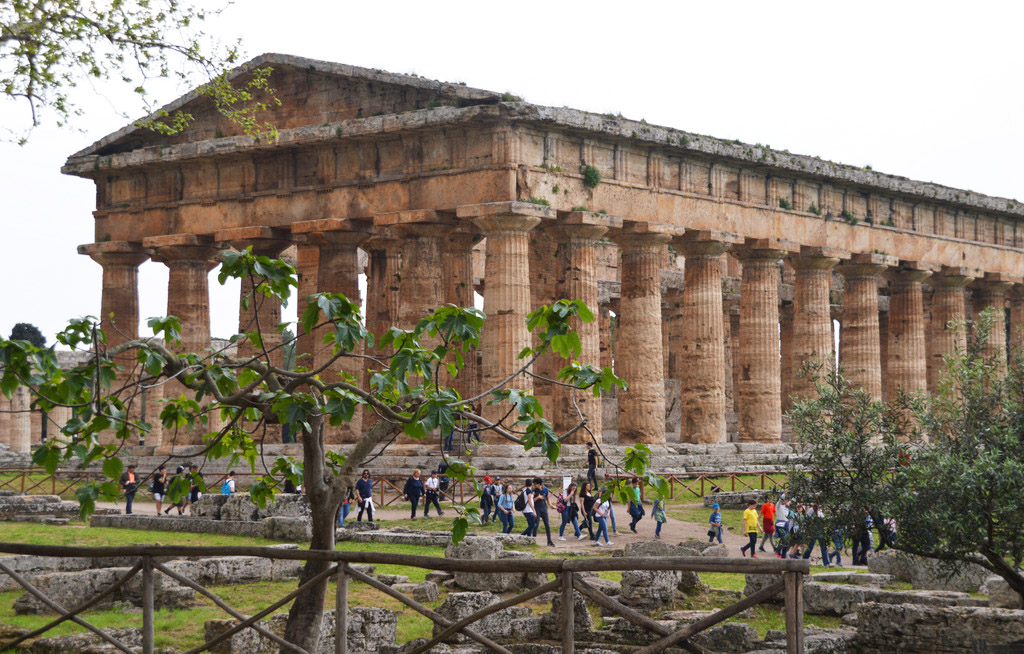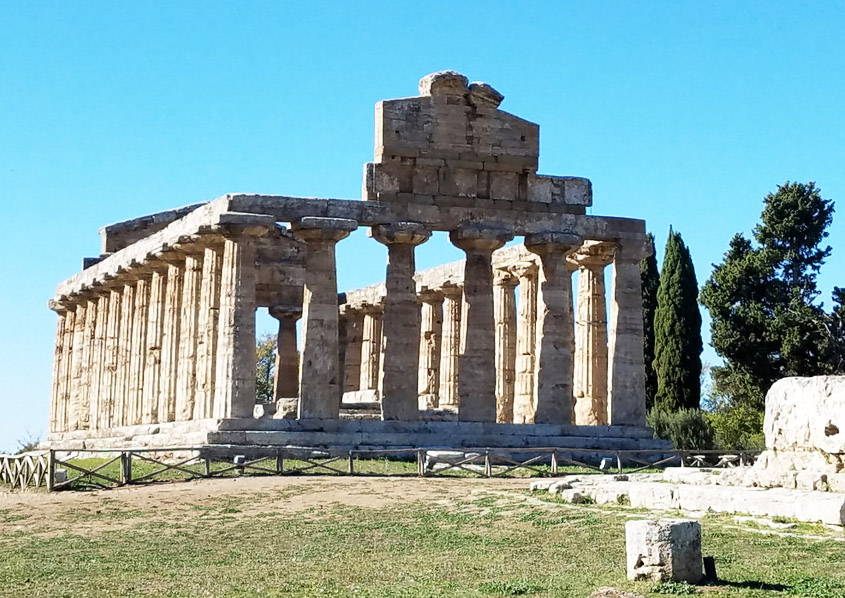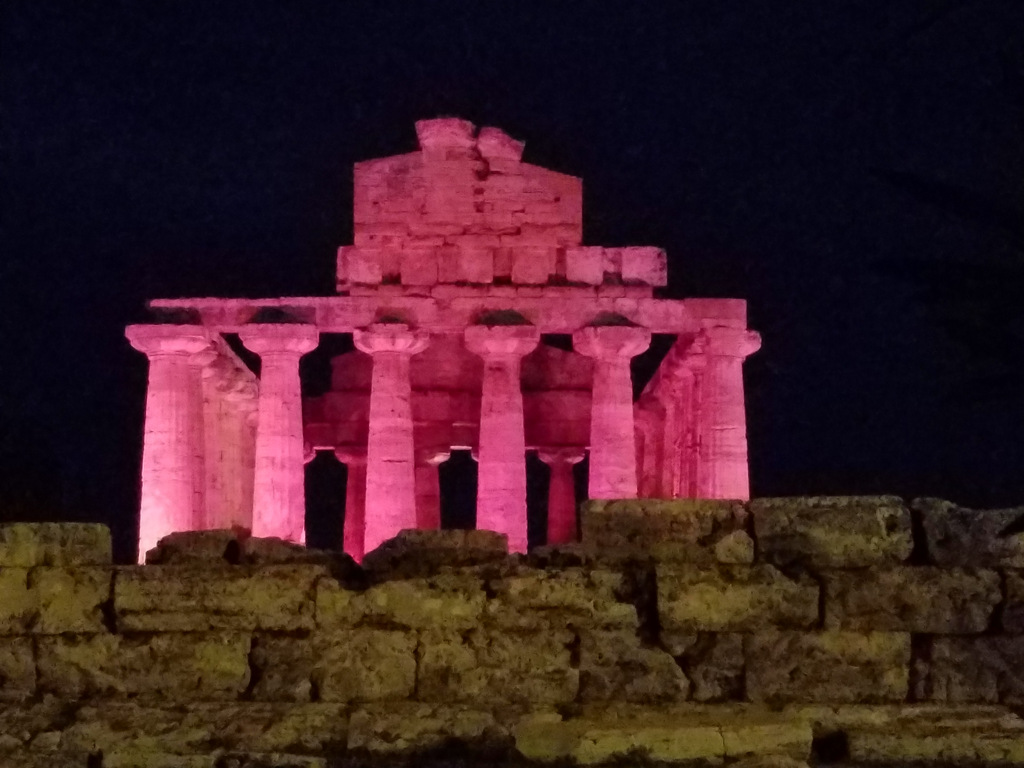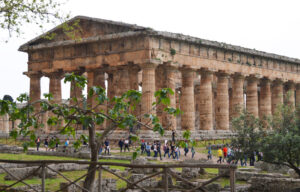
Whether you are a history buff, an archeologist by profession, an architect, or simply a curious tourist you will thoroughly enjoy visiting the Archeological Park of Paestum, Italy. The great highlights of this ancient site are the remains of three very well-preserved ancient Greek temples. The temples of Paestum have stood the test of time, and now whisper tales from their glorious past. In addition to the Grecian temples, you will also find well-preserved artifacts, a Roman amphitheater, and a WWII landing site. As a UNESCO World Heritage Site, Paestum is one of the best places to visit in Italy to learn firsthand why this land is known as the Magna Graecia. The video at the end of this post will explain further the magnificence of this historic location.
The Origins of Paestum

Paestum is about a 1h-30m drive from Naples. First named Poseidonia after the Greek sea god Poseidon during the 6th century BC. Its conquest was part of the second wave of Greek colonization in Magna Graecia (Great Greece) of southern Italy. Early colonists built fortifications (i.e. defensive walls surrounding the coast) before
moving uphill. The fertile land was considered the sanctuary of Poseidon due to its proximity to the Ionian Sea. That is why many historians mistook the temples of Paestum as a tribute to the God of the sea.
In 410 BC, the great town was seized by native Samnite-Oscan invaders. A few centuries later, it fell under the Roman Empire (around 273 BC) and they named it Paestum. The town prospered much like its Grecian days during the initial Roman years. Yet, a series of natural catastrophes (i.e. earthquakes, floods, and malaria outbreaks) and savage raids by the Saracens led to its demise.
The settlement was rediscovered in the eighteenth century. This began a reemergence of other ancient forgotten cities (i.e. Pompeii and Herculaneum). Archaeological findings and the well-preserved Doric temples of Paestum became aspectual to see and they are Paestum’s claim to fame. Paestum to this very day continues to attract people because of its ancient past and magnificently preserved historical artifacts. The Temples of Paestum are one of the best UNESCO World Heritage sites to visit in Italy. The three surviving temples captivate audiences due to their intricate details and well-preserved architecture. They truly have stood the test of time!
They represent the hard work and craftsmanship of the ancient Greeks. Now let’s learn more about the three stunning temples of Paestum.
Temple of Hera I (The Basilica)

The first temple of Hera was built around 550 BC. The brown-tinted building was made from limestone and featured two doors and nine columns that incredibly remained intact over the centuries. At first, this temple was thought to not be a place of worship but used as a (basilica) town hall. However, after many excavations, numerous figurines of the goddess Hera were found buried around the structure. Hera in Greek mythology is the wife of Zeus, King of the Gods. Therefore this temple has been called by both names.
Temple of Hera II
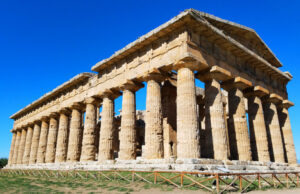
Built in 460 BC, the Doric Temple of Hera II (often called Temple of Neptune) remains the best-preserved temple in Paestum, with only the roof and some walls missing. Once again an amazing accomplishment for a structure that is thousands of years old. This temple was made with limestone and features six fluted columns. The longer sides have fourteen columns. Additionally, it has three aisles where sacrifices and offerings to the gods were performed.
Temple of Athena
The third temple was built as a tribute to Athena the Goddesses of war and wisdom in 500 BC. It’s narrower than its neighboring temples. Historians first identified it as a temple for Ceres before historians found the statuettes for Athena buried around the grounds of this site. This structure has most of its six fluted columns and 13 longer ones. They stand fully intact and well-preserved.
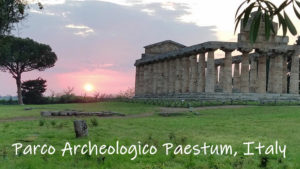
Paestum and the Salerno Beach Landing: What’s the Connection with WWII?

On September 9th, 1943, Operation Avalanche took place to invade Normandy and conquer southern Italy. The codename refers to the landing of Allied troops (British X Corps) on Salerno Beach due to its strategic location. The team was led by the United States Fifth Army General Mark W. Clark.
The army’s stay at the ancient site was prolonged when the Germans and Italians resisted the Alliance. This siege lasted for approximately nine days until the Allied forces won.
During this time the ancient temple of Hera II (Temple of Neptune) was set up by a US Army company as a transceiver station. The other temples were transformed into Red Cross hubs for healing wounded soldiers. It is incredible to think how these ancient temples served as military outposts and command centers during Operation Avalanche in WWII. It’s a humbling sight to see once you’ve been told the full story.
UNESCO World Heritage
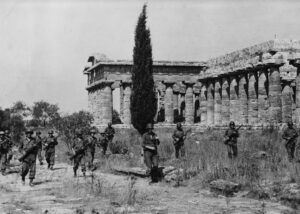
The Archaeological Park of Paestum ensures that the area’s ancient past will remain well preserved. And, not to forget its more recent past and connection to the Second World War. addition to its more recent past. It is a place to relish, learn from and realize that these temples are a treasure for all mankind. Today, this historical site gives us a glimpse of life in bygone eras. It also reflects the magnificence and splendor of Greek architecture along with its association with World War II makes it a must-see location when visiting Campania with us.

